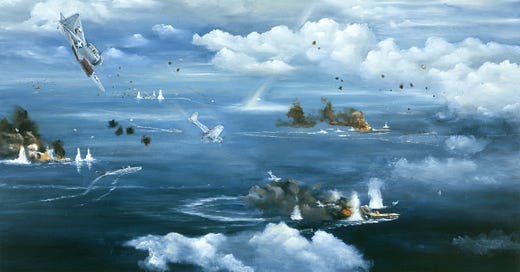War and Deterrence in the Indo-Pacific: Part 1
Its not what you bring, its what you can build.
Hello All,
Welcome to the first part of the series I told you about yesterday. This paper emerges from some remarks I made as chair of one of the panels at the workshop—one devoted to thinking about what we might learn (and not learn) by looking at World War II in the Pacific.
The other papers will be much more contemporary—so think of this as scene setting until we get to issues facing the US today in the subsequent ones.
Don’t Begin from a Standing Start
You would hardly be alone if you looked at the War in the Pacific in 1942 and thought that it was the Japanese that suffered the greatest losses in the key vessel class of aircraft carriers. After all, much of the historical discussion presents the year as a pivot, with the Japanese running wild until June 1942, when they were stopped in their tracks by the devastating losses they suffered at the famous Battle of Midway.

During Midway, in only the matter of a few hours between June 4 and June 5 1942, the Japanese lost four of their most important fleet aircraft carriers: Soryu, Kaga, Akagi and Hiryu. Thus the idea of a decisive battle was born—with Japanese naval air power not able to recover, and the US able to turn the tide.
What if I were to tell you, however, that the US suffered its own, more damaging Battle of Midway in 1942. Its true. The big difference between the US Midway and the Japanese Midway was not the result, it was that the US version of the battle happened on 4 separate days, not one—and therefore does not fit into the decisive battle paradigm so loved of history books.
Keep reading with a 7-day free trial
Subscribe to Phillips’s Newsletter to keep reading this post and get 7 days of free access to the full post archives.


